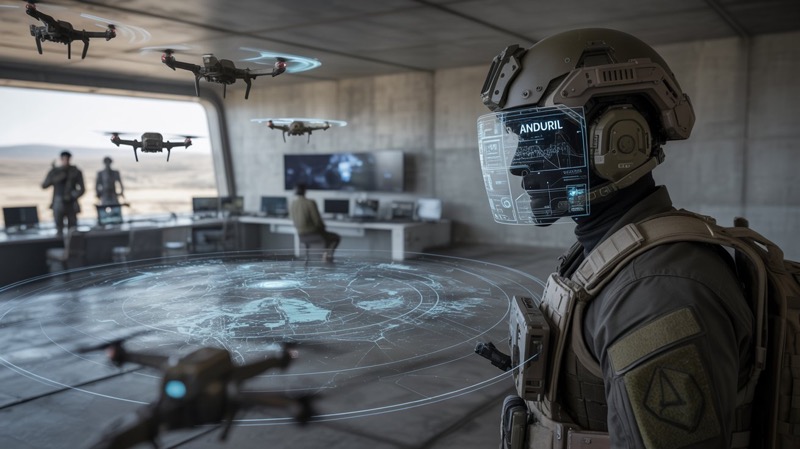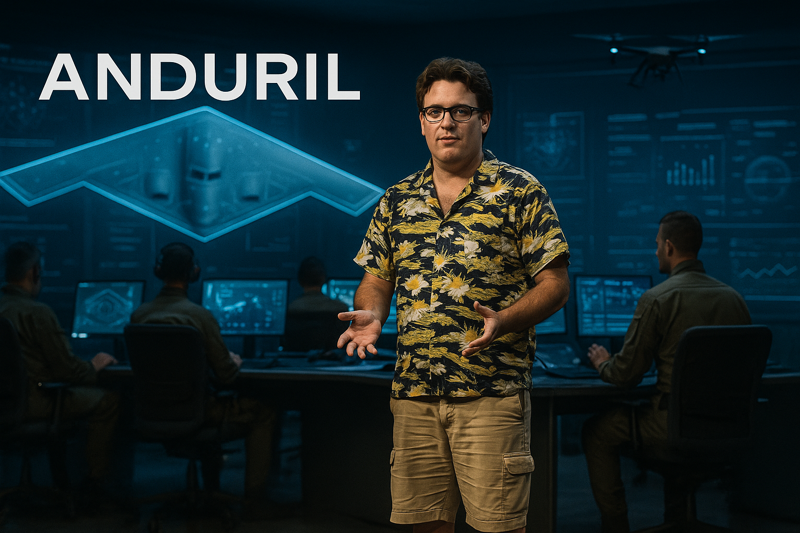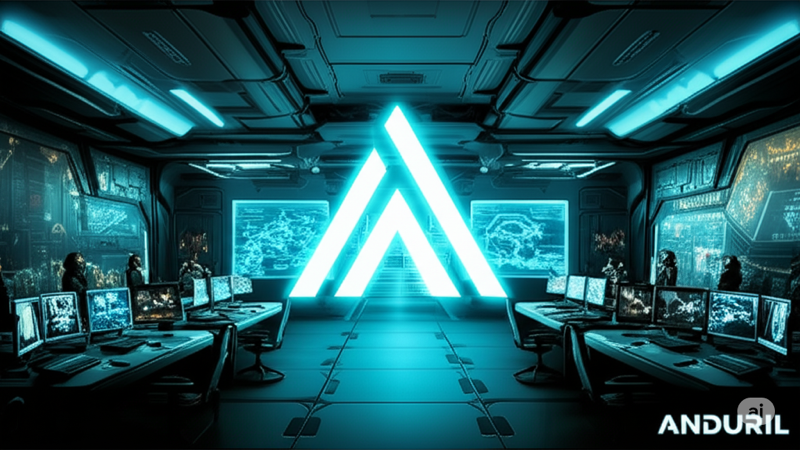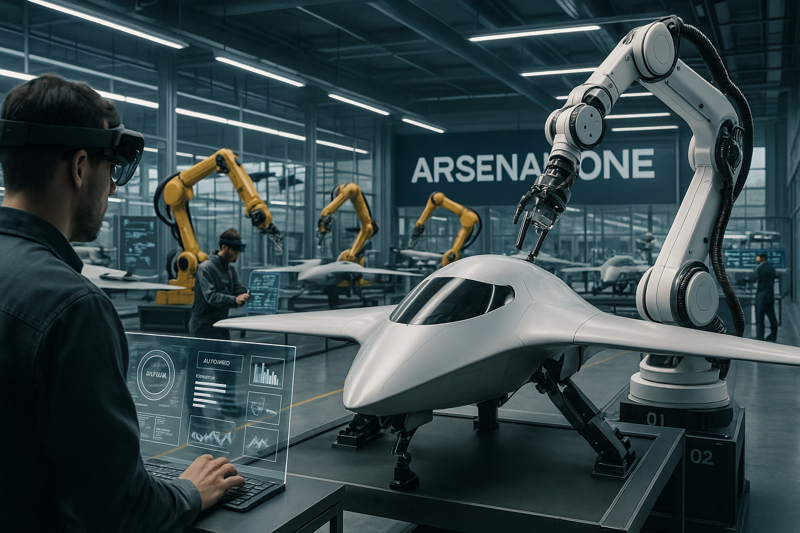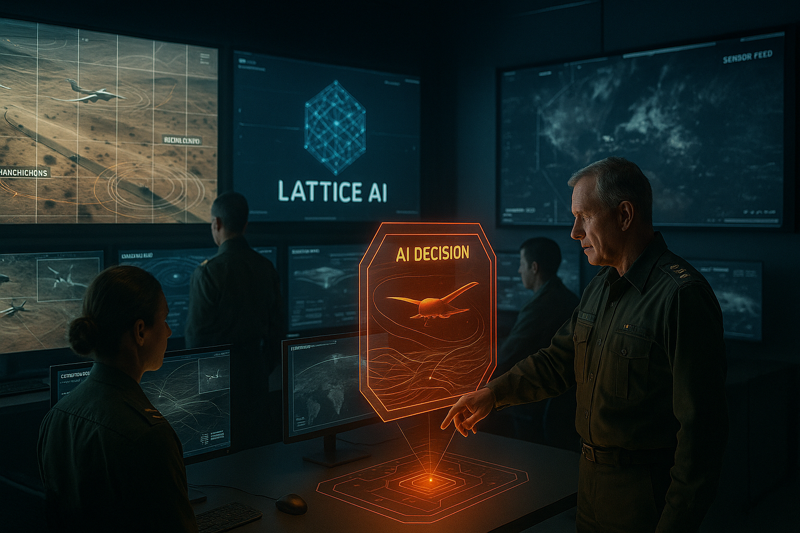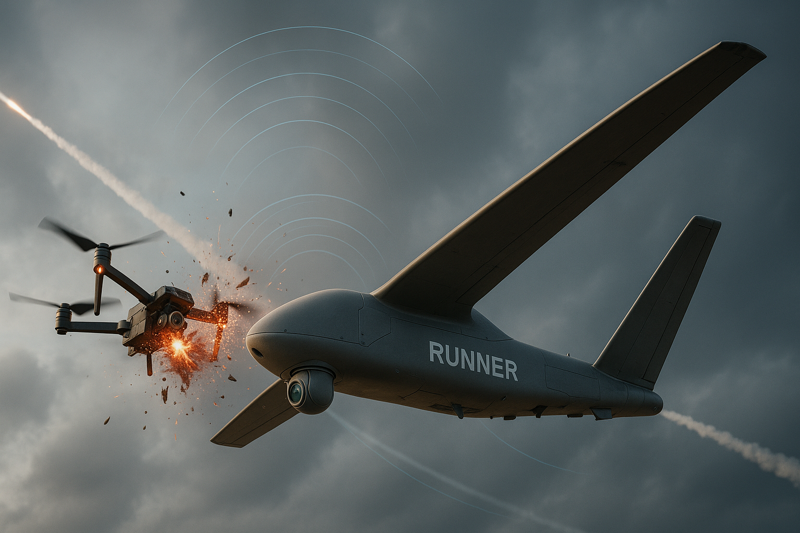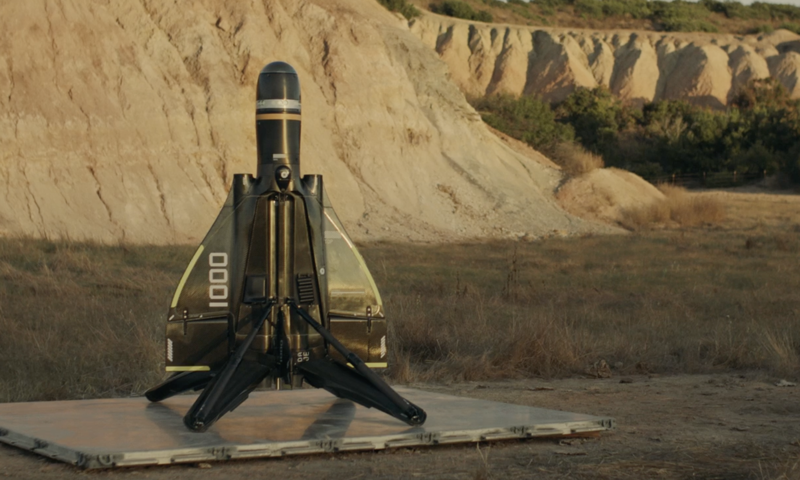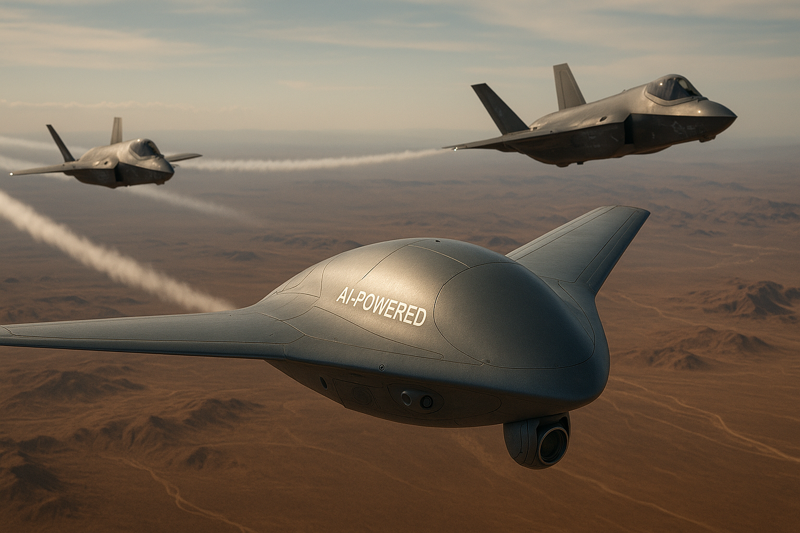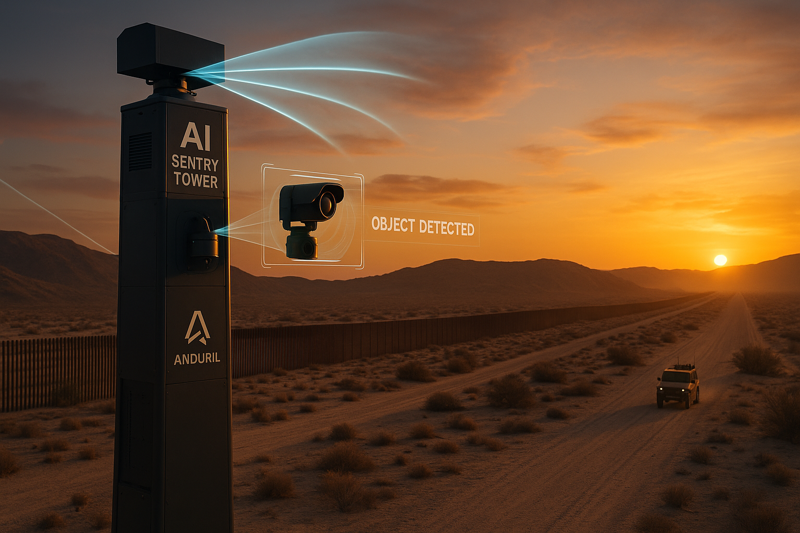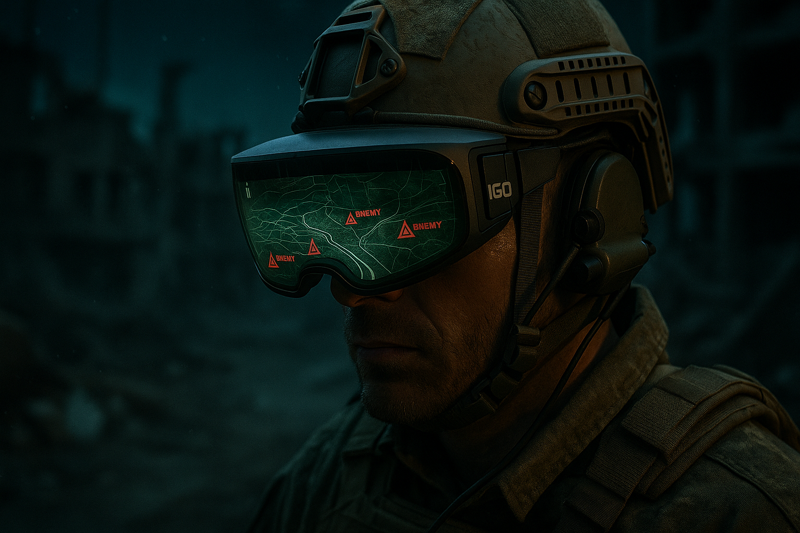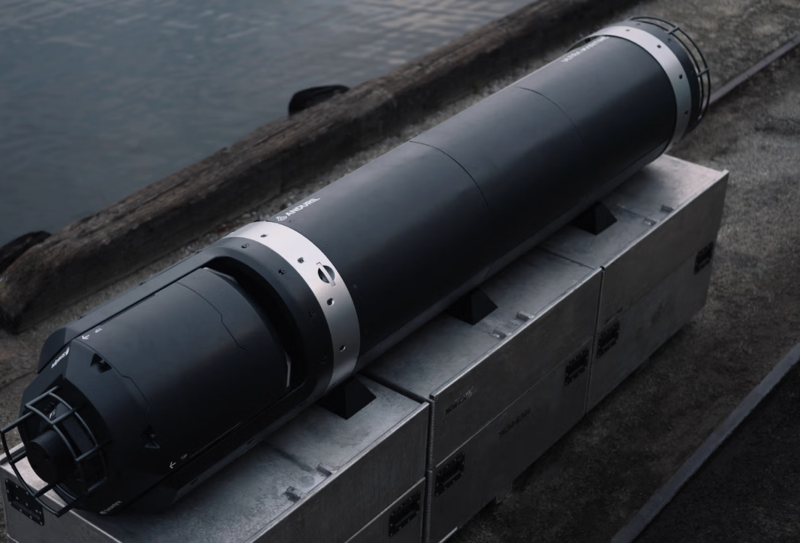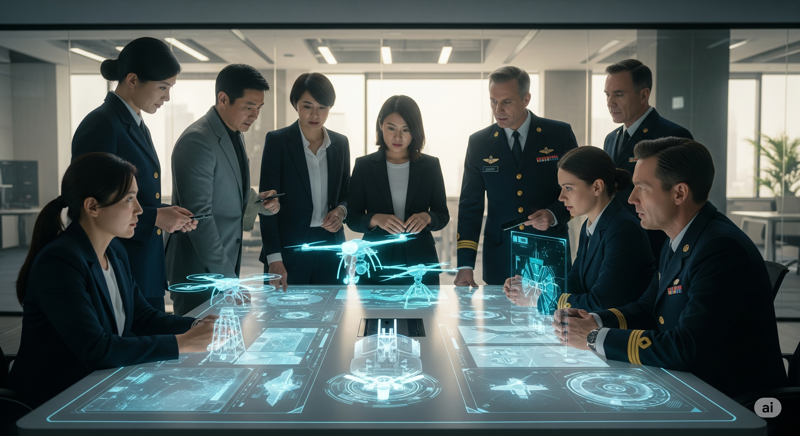Anduril IPO: All You Need to Know before Invest in This “Palantir-Meets-Tesla” Defense Unicorn
Anduril’s Imminent IPO: A Deep Dive into the $30 Billion Defense Disruptor
The global defense landscape is undergoing a radical transformation, driven not by legacy contractors but by agile, Silicon Valley-inspired innovators. At the forefront of this revolution stands Anduril Industries, a company that has rapidly ascended to unicorn status, disrupting traditional defense paradigms with its cutting-edge artificial intelligence, autonomous systems, and a product-first approach. For discerning investors with a keen eye on the intersection of technology and national security, the impending Anduril IPO presents a compelling, albeit complex, opportunity.
This cornerstone article delves deep into Anduril’s disruptive business model, its impressive growth trajectory, key technological advancements, and the strategic implications of its potential public debut. We will also explore the challenges and risks, and address the pressing question: How to invest in Anduril stock before IPO?
The Rise of a Defense Unicorn: Anduril’s Distinctive Identity
Anduril Industries, founded in 2017 by Palmer Luckey – the visionary behind Oculus VR – alongside former Palantir executives, has positioned itself as a “defense version of Palantir meets Tesla.” This description aptly captures its essence: a blend of sophisticated data analytics and AI-driven autonomy applied to critical national security challenges. CNBC has even recognized Anduril as one of the most disruptive companies globally, a testament to its rapid impact.
Unlike the traditional, often slow-moving defense industrial base, Anduril operates with the agility and innovation cycles of a tech startup. It proactively develops solutions rather than waiting for government specifications, funding its research and development internally to then offer fixed-price contracts to defense agencies. This approach not only accelerates product delivery but also aims for significantly higher gross margins (targeting 40-50%) compared to the 8-10% typical of established defense giants like Lockheed Martin or Boeing.
Anduril’s growth has been nothing short of meteoric. As of June 2025, the company boasts over 3,500 employees and reported revenues exceeding $1 billion in 2024, a remarkable achievement for a company in the US defense tech sector. Its cumulative funding has surpassed $6 billion, with the latest Series G round in March 2025 raising a substantial $2.5 billion, pushing its valuation to an impressive $30.5 billion. Some secondary market offers have even reportedly reached as high as $45 billion, signaling intense investor appetite.
Palmer Luckey has openly stated that an IPO is not a matter of “if” but “when.” He emphasizes that becoming a publicly traded company is crucial for securing larger, “trillion-dollar” defense contracts, which the military has indicated will increasingly involve new contractors. Transparency, rigorous financial auditing, and the ability to leverage public market capital are seen as essential for Anduril to fulfill its ambition of becoming a dominant force in global defense.
Core Differentiators: A Silicon Valley Mindset Meets Battlefield Needs
Anduril’s success is rooted in its unique operational philosophy and technological prowess, which starkly contrasts with the conventional defense industry:
- Aggressive R&D Investment: A cornerstone of Anduril’s strategy is its dedication to research and development. The company reportedly allocates a “vast majority of its revenue to R&D,” a stark departure from the single-digit percentages typically seen in traditional defense contractors. This intense focus enables rapid product iteration and responsiveness to evolving threats.
- Agile Development & Continuous Updates: While traditional defense contractors are “still holding meetings,” Anduril “has already delivered products to the front line and remotely updates them with AI algorithms.” This rapid development cycle means their systems are constantly improving and adapting, offering a significant advantage in dynamic combat environments.
- Silicon Valley Manufacturing: Anduril applies a “Silicon Valley consumer electronics” approach to defense manufacturing. Its Arsenal One factory in Ohio, with a planned investment of nearly $1 billion, is designed for direct deployment of aircraft from the factory floor to the client or combat zone. This echoes the rapid production capabilities seen in World War II aircraft factories, aiming for tens of thousands of autonomous systems annually by leveraging a software-defined manufacturing process.
Cutting-Edge Products: Anduril’s Arsenal of Autonomy
Anduril’s product portfolio is a testament to its disruptive vision, spanning virtual border walls to advanced autonomous air, sea, and land systems, all integrated through its powerful AI platform, Lattice.
At its core, the company seamlessly integrates a diverse array of autonomous systems across air, ground, and sea domains, all orchestrated by its powerful central nervous system, the Lattice OS. This comprehensive suite of offerings represents a paradigm shift from traditional defense procurement, emphasizing software-defined hardware and rapid iteration.
Lattice OS: The AI Brain of Anduril’s Ecosystem
At the heart of Anduril’s formidable arsenal is Lattice, its proprietary AI-driven command and control platform. More than just software, Lattice serves as the “brain” and central nervous system for the entire Anduril ecosystem. This open and scalable operating system is engineered to integrate vast amounts of data, not only from Anduril’s own assets but also from a myriad of third-party partners’ equipment, encompassing all autonomous equipment, sensors, interceptors, drones, soldiers, and radars. Through sophisticated sensor fusion, advanced machine learning, and cutting-edge computer vision, Lattice consolidates this deluge of information into a single, unified battlefield situational awareness display. This capability empowers operators to swiftly identify threats, make critical decisions, and command autonomous systems with unprecedented speed and precision. By significantly reducing the traditional observation-judgment-decision-action (OODA) cycle time, Lattice dramatically increases command efficiency, proving indispensable for Anduril to achieve its ambitious goals of artificial intelligence and autonomy across its entire product line.
This powerful AI has undergone multiple combat tests with the US military and allied forces, including Australia and the UK, proving its operational effectiveness.
Dominating the Skies: Anduril’s Aerial Autonomy
Anduril’s airborne systems span an impressive range, from compact, soldier-portable drones designed for frontline operations to formidable, large-scale combat aircraft poised for high-stakes missions.
The smallest Anduril unmanned aerial vehicle (UAV) is the Bolt. It’s a 12-pound quadcopter that can be deployed in under five minutes and is designed for both reconnaissance and as a loitering munition. The Bolt-M is a variant of the Bolt specifically designed to carry and deliver ordnance.
Bolt:A lightweight, man-portable drone primarily used for intelligence, surveillance, and reconnaissance (ISR) and search and rescue (SAR).
Bolt-M:A munition-carrying variant of the Bolt, designed for precision strikes and equipped with a payload of up to 3 pounds.
Complementing BOLT is Ghost, a larger, yet still soldier-operable, portable UAV boasting extended flight times and the capacity to carry heavier payloads, further enhancing ISR capabilities, and notably, holding US Blue UAS certification.
For air defense, Anvil, a small autonomous interceptor drone, can be rapidly deployed when Sentry Towers or other sensors detect unauthorized aerial threats, intercepting and neutralizing them through kinetic impact.
Scaling up its aerial capabilities, Anduril introduces medium unmanned aerial vehicles and weapons. Barracuda is envisioned as a groundbreaking cruise missile weapon capable of carrying payloads exceeding 100 pounds. Designed for ultra-large-scale production and mass deployment, Barracuda aims to disrupt conventional manufacturing by claiming a 50% reduction in production time, a 95% decrease in required tools, and a 50% reduction in parts (SKU) compared to competitors, while also achieving an average cost reduction of 30%.
Another pivotal medium-sized asset is Road Runner, a Vertical Take-Off and Landing (VTOL) aircraft engineered for rapid air defense. Its exceptional ability to quickly launch, identify, intercept, and destroy various aerial threats is matched by its groundbreaking reusability; should it fail to hit its target, Road Runner can be safely recovered and relaunched at near-zero cost, making it significantly more cost-effective than traditional single-use missiles.
At the pinnacle of Anduril’s aerial ambition is Fury, a high-performance, multi-mission, fifth-category large UAV. Designed for high-end combat operations, Fury belongs to a class of UAVs with a maximum take-off weight over 1,320 pounds (600 kg) and the capability to fly above 18,000 feet (5,500 meters). Fury’s core mission is human-unmanned collaborative combat (CCA), often referred to as “Loyal Wingman” initiatives. It is specifically engineered to operate as an advanced extension of manned fighter jets like F-35, autonomously detecting and engaging threats earlier, thereby enhancing the survivability and operational reach of pilots in manned aircraft. This demands that Fury possess fighter jet-level hardware performance. Although this project remains in its highly confidential early stages, it holds immense potential for generating significant revenue, potentially exceed $10 billion and achieving profound technological breakthroughs for Anduril, potentially ushering the company into the realm of traditional fighter jet manufacturing.
Groundbreaking Surveillance and Command: Anduril’s Terrestrial Systems
Anduril’s significant impact on ground systems commenced with its innovative approach to border security. The Sentry Tower (AI Border Surveillance) represents Anduril’s first major breakthrough, initially deployed with the U.S. Customs and Border Protection (CBP). This AI-driven autonomous surveillance system provides 24/7 automated monitoring across vast areas, substantially reducing the necessity for extensive human patrols as well as effectively replacing traditional physical barriers and surveillance cameras. Sentry Towers also integrate advanced edge computing and networking capabilities. By the end of 2024, over 300 Sentry Towers had been deployed along the Us-Mexico border, securing contracts exceeding tens of millions of dollars.
Beyond surveillance, Anduril has developed the Menace (MIS) Systems for Command, Control, Communications, and Computing (C4). These are rugged, rapidly deployable C4 systems meticulously designed to provide reliable computing power and connectivity for frontline personnel operating in challenging communication environments. Menace systems are capable of processing data from both Anduril’s own sensors and third-party sources, running the Lattice OS, and other critical mission software, thus affording combat personnel a crucial decision advantage at the tactical edge. The Menace family includes the deployable, stationary ground C4 solution (MIS-I), a vehicle-mounted variant (MIS-X), and a highly portable C4 solution (MIS-T).
Further solidifying its ground presence, Anduril is a key partner in the U.S. Army’s Titan (Tactical Intelligence Targeting Access Node) project, focusing on the next-generation vehicle-mounted expeditionary ground station. While Palantir serves as the primary contractor, Anduril assumes a critical role responsible for the hardware design, development, and scalable manufacturing, including the sophisticated power, communications, cooling, and computing infrastructure essential for handling high-intensity software workloads. This collaboration directly leverages the design principles and manufacturing experience garnered from the Menace project.
In a highly publicized development, Anduril officially took over the ambitious yet troubled U.S. Army Integrated Visual Augmentation System (IVAS) project from Microsoft in 2025. Described as one of Anduril’s “coolest products,” this head-mounted device revolutionizes battlefield perception. Microsoft had encountered significant challenges in militarizing its consumer-grade HoloLens augmented reality technology for battlefield use. Anduril is now leading future iterations and production, strategically collaborating with Meta (the parent company of Oculus VR, Palmer Luckey’s previous venture) to combine Meta’s existing AR device technology with Anduril’s robust systems. This initiative powerfully leverages Palmer Luckey’s extensive background in virtual reality, aiming to dramatically enhance soldier awareness and survivability by seamlessly integrating with other unmanned systems, transforming combat into a more intuitive, “video game”-like interface. If successful, this contract could potentially reach up to $22 billion.
Depths of Defense: Anduril’s Naval and Underwater Systems
Anduril extends its revolutionary AI and autonomous technology to the challenging marine environment with a suite of advanced, collaborative underwater systems. These naval assets are not merely isolated tools but collectively form a sophisticated networked autonomous marine sensing and defense system, meticulously driven by the overarching Lattice AI software platform.
Among its underwater surveillance capabilities is Seabed Sentry, conceptually similar to the ground-based Sentry Tower but specifically engineered for deployment in subsurface environments. For offensive capabilities, Corhead is described as an intelligent torpedo—a high-speed autonomous underwater vehicle capable of carrying various payloads to engage and neutralize enemy underwater or surface threats. Forming the backbone of Anduril’s underwater fleet is the Dive Series, serving as multi-functional underwater mission platforms. This series includes the large Dive-LD and the ultra-large Dive-XL. A crucial and differentiating capability of these large underwater vessels is their role as “motherships,” designed to transport and strategically deploy other, smaller underwater systems, such as the Seabed Sentry and Corhead, enabling a layered and highly effective underwater defense strategy.
Anduril’s undeniable success, notably with the CBP’s Sentry Tower project, has consistently led to continuous contracts with other vital U.S. government agencies, including the U.S. Special Operations Command (SOCOM) and the U.S. Air Force’s Advanced Battle Management System (ABMS). The company also actively engages in international collaborations, exemplified by its partnership with Rheinmetall in Europe for the production of Barracuda and Fury, and its ongoing work with Palantir on various software initiatives beyond the Titan project. Anduril’s growing list of government clients extends beyond the U.S. to include key allied nations such as Australia and the United Kingdom, solidifying its position as a global leader in defense innovation.
Strategic Implications and Risks: Navigating the Future of Defense
Anduril’s emergence signifies a profound shift in technological innovation, with top-tier talent and venture capital increasingly flowing into strategically vital defense sectors.
- Disruption of the Old Order: Anduril’s agile model has “already stirred up the old order of the US and even global defense industry,” posing a direct threat to the established dominance of giants like Lockheed Martin and Boeing. Its ability to rapidly develop and deploy advanced systems challenges the traditional, lengthy procurement cycles.
- Collaboration and Ecosystem Building: Anduril is not operating in a vacuum. It actively collaborates with tech giants like Meta and OpenAI to integrate advanced AI and AR/VR into defense applications, and is open to other tech companies joining its defense innovation efforts. This collaborative approach fosters a new ecosystem for defense technology development.
- Reawakening of National Responsibility: Palmer Luckey’s transition from consumer VR to defense tech “symbolizes a generation of Silicon Valley’s awakening to national responsibility and the shift of technological power to more serious fields.” This represents a growing recognition within the tech community of the critical role they can play in national security.
However, despite its immense potential, Anduril faces significant risks:
- Manufacturing Scale and Delivery: While Arsenal One is ambitious, scaling production to the level of traditional defense contractors and supporting global projects at that scale remains a considerable challenge. Meeting ambitious manufacturing timelines, such as starting production in July 2026, will be crucial.
- Policy and Governance: The defense procurement landscape demands high transparency and rigorous financial auditing. While an IPO is anticipated to address some of these needs, securing major Pentagon contracts will ultimately depend on Anduril’s underlying operational governance capabilities and its ability to navigate complex bureaucratic processes. The government’s historical aversion to perceived “excessive profits” for defense contractors (defined as below 15% in some cases) could also pose a challenge to Anduril’s targeted 40-50% gross margins.
- Profitability: The company is not currently profitable, which is common for high-growth tech companies but presents a risk, especially in the defense sector where revenue cycles can be long. Its high valuation relative to sales (a price-to-sales ratio of about 30.5 based on its 2024 revenue and latest valuation) indicates strong market confidence in its future potential rather than current profitability.
The Anduril IPO: What Investors Need to Know
While the precise date for the Anduril IPO remains unconfirmed, all indicators suggest a public debut within the next 12 to 24 months, with 2026 being a strong possibility. Palmer Luckey’s statements and the company’s continuous significant funding rounds underscore its trajectory towards the public markets.
Current Status: It is crucial for investors to understand that Anduril Industries is currently a private company. Its stock is not publicly traded on any exchange like the NYSE or Nasdaq, and therefore, it does not have a public stock symbol.
Valuation and Funding: Anduril’s latest Series G funding round in March 2025 valued the company at $30.5 billion, with significant investor interest indicating even higher secondary market valuations. This reflects a “super unicorn” status, highlighting strong belief in its future potential, possibly positioning it as the “next Palantir or a hybrid of Lockheed Martin and Tesla.” The company has raised over $6 billion in private capital, with notable investors including Founders Fund, Sands Capital, Baillie Gifford, and Fidelity.
IPO Timing and Speculation: While no official filing has been made, the company’s moves, including the construction of the Arsenal One factory and its continued rapid growth, are clearly setting the stage for a public offering. The most likely timeline for an Anduril IPO appears to be in 2026 or potentially 2027, provided the Ohio manufacturing facility meets its ambitious targets and broader IPO market conditions are favorable. Speculated IPO valuations range widely, from $40 billion to even $90 billion, depending on continued revenue growth and the successful execution of major Department of Defense contracts.
Future Outlook: A New Era of Defense Innovation
Anduril’s journey toward an IPO represents more than just a company going public; it signifies a pivotal moment in the defense industry. By embracing a Silicon Valley mindset, investing heavily in R&D, and rapidly deploying advanced AI and autonomous systems, Anduril is forcing a fundamental acceleration of change across the global defense landscape.
While the company is not yet profitable, the market’s high valuation reflects a strong belief in its future potential to commercialize AI/VR automation in the military sector at an unprecedented scale. If Anduril successfully navigates the complexities of scaling manufacturing, government procurement, and public market scrutiny, it has the potential to redefine the defense industrial base and become a cornerstone investment for those looking to participate in the future of national security technology.
Investors should closely monitor Anduril’s progress, particularly its manufacturing ramp-up at Arsenal One and its ability to secure large-scale, long-term government contracts. The Anduril IPO will undoubtedly be a landmark event, offering a rare opportunity to invest in a company that truly embodies the future of defense. However, prudence dictates a thorough understanding of the company’s unique risks and a realistic perspective on pre-IPO investment accessibility. For now, following the company’s trajectory and considering indirect exposure through relevant ETFs remains the most practical approach for most investors.
Disclaimer: This article is for educational purposes only and does not constitute investment advice. Investors should conduct their own due diligence before making any financial decisions. We are not responsible for any investment losses incurred based on the information provided in this article.
